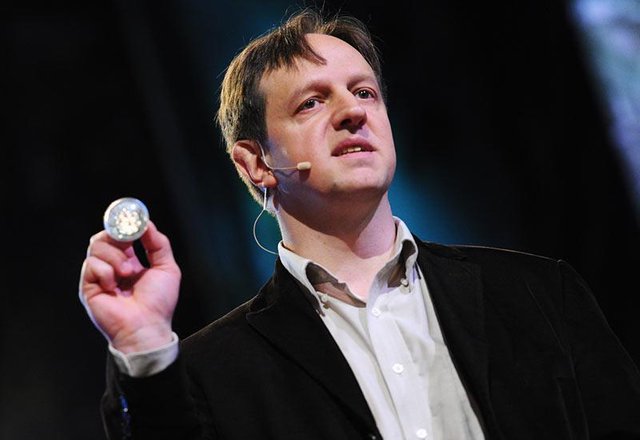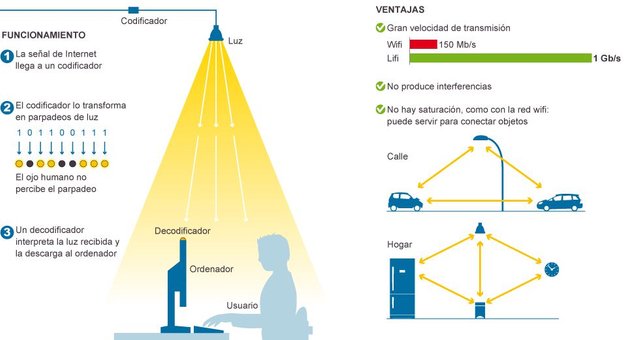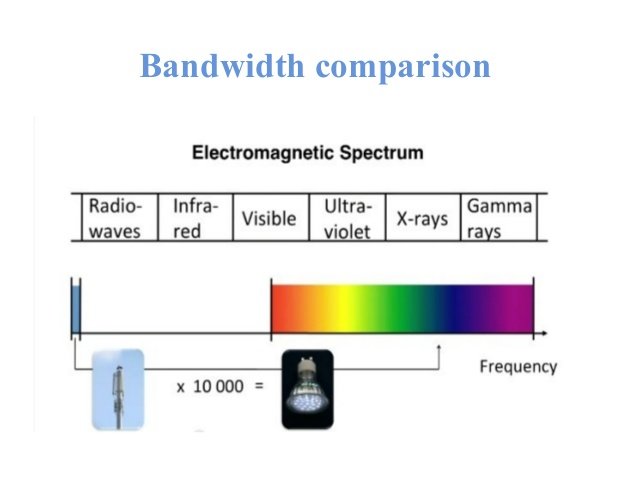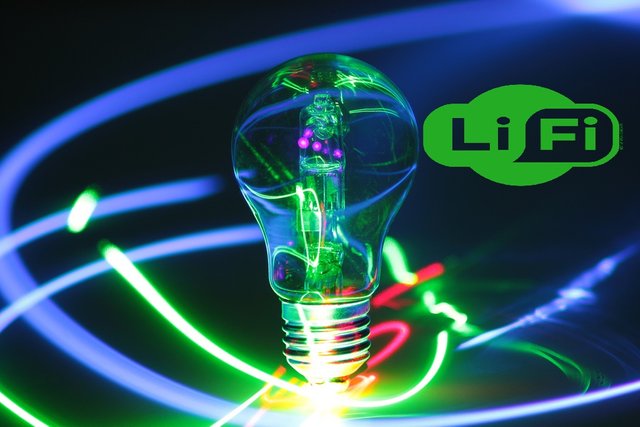Is the end of WiFi coming?
A common activity of our technological era is the use of wireless networks or WiFi, but this was not a fortuitous process born overnight, some speculated on whether wireless networks would completely replace wired networks, their advantages, disadvantages , costs and other factors.
Well, just as it happened with WiFi, a technology designed in the green wave is being managed and that is increasingly taking on a boom called LiFi, which is the acronym for the English language of Light Fidelity or is also known as Visible Light Communications (VLC in its acronym in English, Visual Light Communications).

Imagine for a moment the implications that would have to be able to transmit data thanks to light (if as you are reading it, use the light beams as a means of transporting information), more or less that is what the project is about.
This is achieved thanks to special bulbs that can switch at high speed, which allows them to emulate the system of ones and zeros of the computer languages, where off would be zero and one would be on.

We can think that this would be something very annoying, to witness how someone turns on and off the light constantly just to be able to have connection as if it were morse code, but the secret is that the transmission is achieved in such a low range that it is imperceptible to The human eye
The term was first coined thanks to Professor Harold Hass of the University of Edinburgh, who made it known to the world at the 2010 Ted Conference. Annex we leave the official presentation.
To be able to enjoy this technology we should have the special bulbs and a photo-receiver, which in the case of laptops could be similar to USB devices for wireless connections and in cell phones it would be a small lens similar to the openings of the cameras that They already have incorporated.
One of the difficulties that Wi-Fi is currently presenting is the saturation of the radio spectrum, in this aspect LiFi could work perfectly as a new trends to release those bands, use a whole new spectrum that we had never exploited before.
Hundreds of tests and experiments have already been done where it is possible to demonstrate that the transmission speed of LiFi can be a hundred times more powerful than WiFi.

In the first tests, minimum transfer rates of 10Mbps were achieved and the maximum reached 500Mbps, then when removing these products from the laboratories, speeds of 1Gbps have been obtained. These numbers may seem amazing and even more if we mention that the studies of the University of Oxford manage to reach 222Gb per second, which gives us to understand the power that can be obtained with these advances.
But of course not everything can be rosy, one of the great limitations is that this mode of data transmission works with the same scheme as the infrared, that is to say, there must be a clean and direct vision between the emitting device and the receiver, it is only enough that there is a small obstacle between these two devices so that communication is lost.

One of the pro that is being applauded with this trend would be the increase in computer security, since in order to interfere / hack communication, they would have to be on the same perimeter, something that does not happen with WiFi networks.
Another notable disadvantage at the moment of the LiFi, is its limitation with respect to the scope, for the moment it has only been possible to guarantee an effective transmission in a distance range of ten meters.
A factor in favor of WiFi networks is that they can pass through walls and other solid bodies, that is, you can have your cell phone in your pocket or protected in a bag and still enjoy the service, this is an attenuation that has not yet was able to overcome the transmission through the light.
But as mentioned at the beginning it is a technology that has evolved, is taking shape and is already commercial in large companies, research campuses and other entities of a certain size, it is only a matter of time for the product to massify and form to be Part of our future realities.
The LiFi is not intended to dethrone WiFi in the first instance, but rather to serve as a complement to each other, for example in the field of aviation this technology would be very useful because it would require less wiring, less interference would occur and passengers could have connectivity only with the light bulbs above their seats.
The PureLife company is one of the pioneers in this sector of marketing the LiFi and of course this was founded by the main speaker of this movement as is Professor Hass, however other companies such as Oledcomm of French origin are also involving this technology in the hospital area Annex we leave a video of a company in Mexico that is also researching and marketing these new trends.
At the moment we can only wait for a reasonable time to begin to show how the LiFi begins to be part of our daily lives, how long it will take we do not know but everything indicates that it will be soon.
